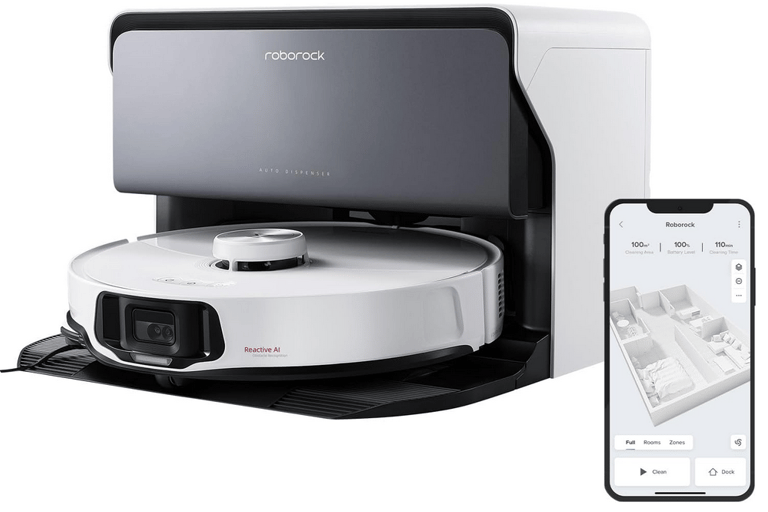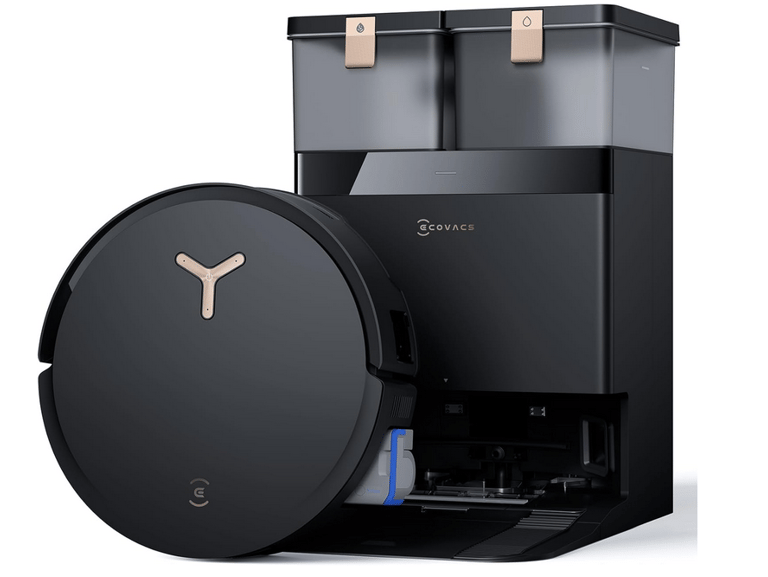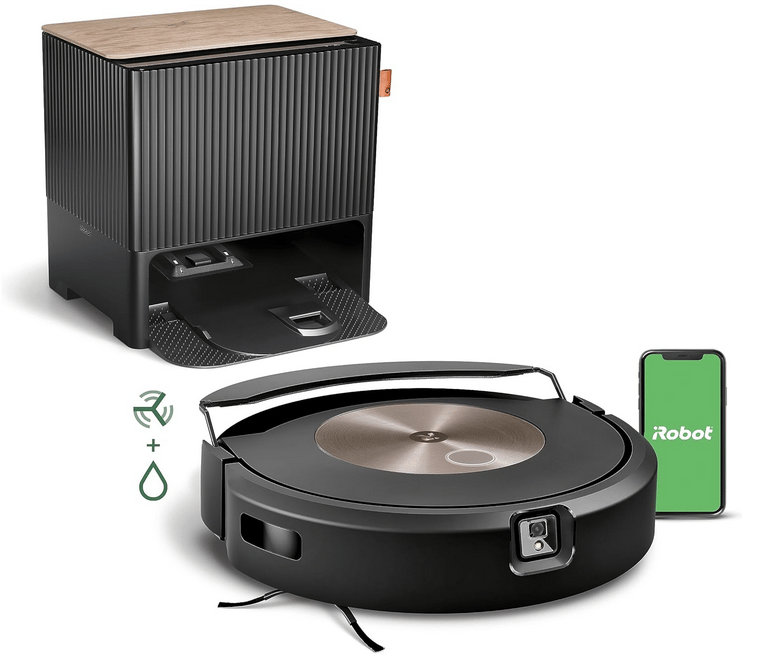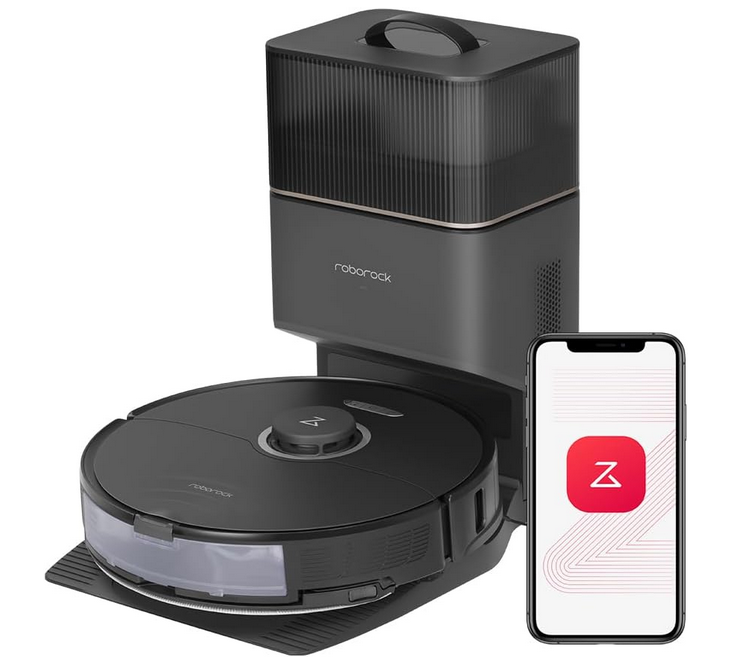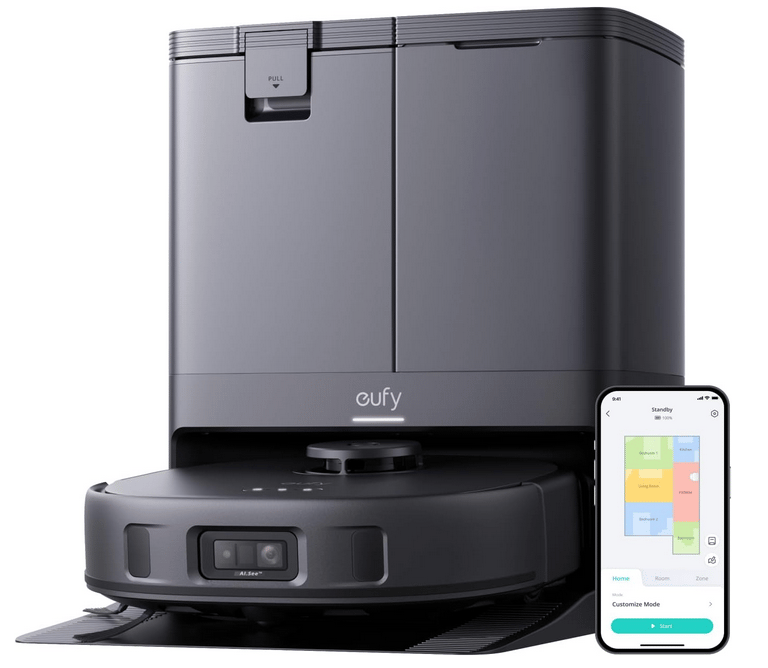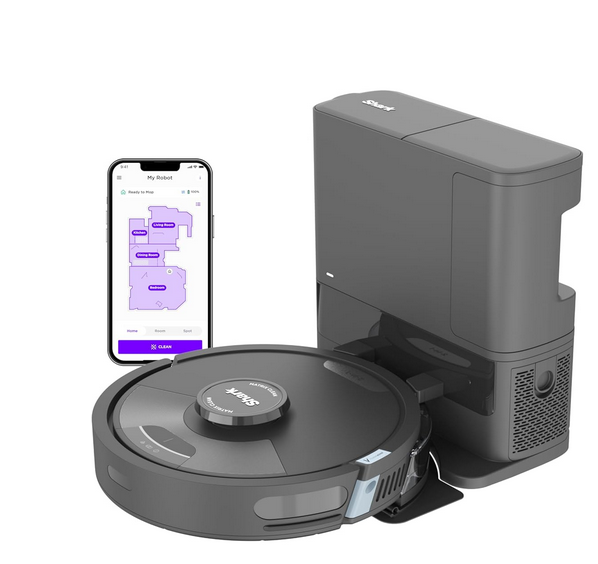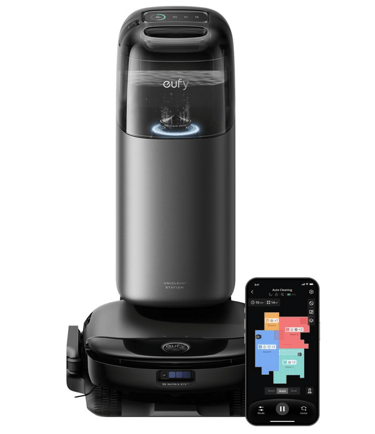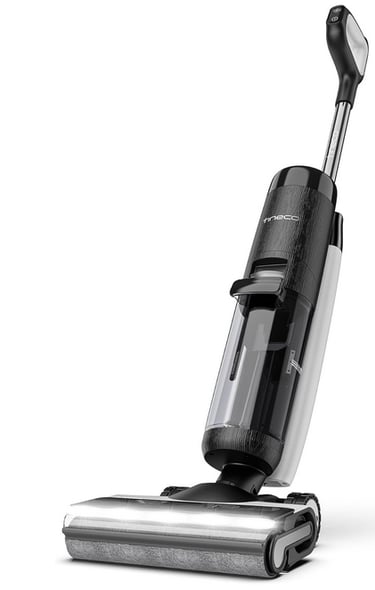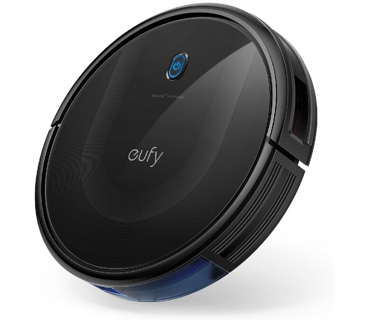The Complete Guide to Robot Vacuums That Actually Mop Your Floors
Discover the best robot vacuums that actually mop! From budget picks to premium models, find out which robot cleaner is right for your floors and lifestyle.
SMART HOME TECHNOLOGY
Sophia Reed
6/17/20258 min read
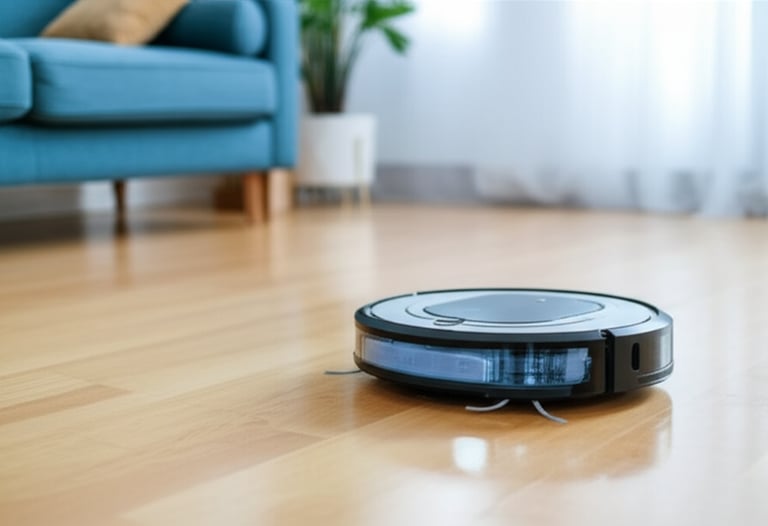

You know that feeling when you've just finished vacuuming, but your floors still don't feel truly clean? I've been there too. That's exactly why I got so excited when robot vacuums started doing more than just picking up dust bunnies – they began mopping too.
After testing dozens of these little cleaning robots over the years, I can tell you that the best ones don't just push dirt around. They actually scrub, wash, and leave your floors looking like you spent hours on your hands and knees. And honestly? Some of them do a better job than I ever could.
Let me walk you through everything I've learned about these game-changing devices, from the tech that makes them work to which ones are actually worth your money.
How These Smart Cleaners Actually Work
The technology behind modern robot vacuum-mops is pretty impressive once you understand what's happening under the hood.
The Magic Behind the Mop
Remember the old days when robot vacuums just had a damp cloth dragging behind them? Those days are long gone. Today's models come with vibrating mop pads that can shake thousands of times per minute, literally scrubbing stubborn stains off your floor. I've watched these things tackle dried-on pasta sauce that I couldn't get off with a regular mop.
Some of the newer models use roller mops instead – think of a tiny paint roller that's constantly spinning and lifting dirt as it goes. The Deebot X8 Pro Omni has one that can actually extend out to reach along your baseboards. I was skeptical at first, but watching it clean areas I usually have to get with a handheld vacuum was genuinely satisfying.
They Clean Themselves (No, Really)
Here's where things get a bit sci-fi. Most of these robots return to their charging stations not just to power up, but to literally wash and dry their own mop pads. I remember the first time I saw my robot vacuum drive itself to its dock, and then watched the station spray water on the mop, scrub it clean, and blow hot air to dry it.
It's like having a tiny car wash for your cleaning robot. The whole process takes about 10 minutes, and honestly, it's more thorough than how I used to clean my regular mop.
Smart Enough to Avoid Your Furniture (Usually)
The obstacle avoidance on these things has come a long way. Using a combination of cameras, laser sensors, and sometimes even AI, they can navigate around chair legs, pet bowls, and that pile of laundry you've been meaning to put away.
I've tested robots that can identify and avoid everything from phone chargers to pet accidents. The Deebot X8 Pro Omni uses both lidar and a 3D camera, which means it creates a detailed map of your home and remembers where everything is. No more finding your robot stuck under the couch at 3 AM.
The Robots That Actually Deliver
After extensive testing, here are the models that consistently impressed me and would actually recommend to friends and family, with real pricing and honest pros and cons.
Premium Tier ($1,200 - $1,800)
This is the current king of robot vacuum-mops, and honestly, it's worth every penny if you can swing the cost.
Pros:
Incredible 10,000Pa suction power
Advanced AI obstacle recognition that actually works
Self-washing dock with hot water cleaning
Excellent carpet and hard floor performance
ReactiveAI 2.0 avoids even the smallest obstacles
Cons:
Expensive upfront cost
Large dock footprint
Can be loud during self-cleaning cycles
App can be overwhelming with features
This is the robot I keep coming back to when people ask for recommendations. The extending roller mop is genuinely game-changing.
Pros:
Unique extending roller mop reaches baseboards
Compact dock design
Self-cleaning brush system reduces maintenance
Excellent obstacle avoidance
Great for homes with lots of furniture
Cons:
Premium pricing
Mop pad replacement can be pricey
Learning curve for optimal settings
Occasional issues with very thick rugs
The latest from iRobot brings serious improvements, especially for pet owners.
Pros:
Industry-leading pet waste avoidance
Powerful suction for deep carpet cleaning
SmartScrub mopping with consistent pressure
Excellent app with detailed cleaning reports
Strong brand reputation and support
Cons:
Expensive consumables (bags, filters)
Slower cleaning compared to some competitors
Dock is quite large
Mopping could be more aggressive on tough stains
Mid-Range Champions ($800 - $1,200)
The S8 Plus is what I recommend when people want flagship features but don't want to spend flagship money.
Pros:
Excellent value for money
6,000Pa suction power
Vibrating mop (3,000 times/second)
Large water tank capacity
Reliable navigation and mapping
Cons:
No self-cleaning dock (available separately)
Mop pad needs manual washing
Can struggle with very thick carpets
Water tank requires frequent refilling for large homes
The sweet spot robot that punches above its weight class.
Pros:
Dual spinning mop pads
Full multifunction dock included
Heated mop drying prevents odors
Good obstacle detection for the price
2.2 pounds of mopping pressure
Cons:
Not as powerful as premium models
Can miss some smaller obstacles
Water tank could be larger
App interface could be more intuitive
A solid American brand option that's been impressing me lately.
Pros:
Excellent value when on sale
Self-cleaning brushroll
Good pet hair pickup
Home mapping and room selection
Reliable customer service
Cons:
Mopping is basic compared to competitors
Can be noisy during operation
Navigation isn't as sophisticated
Dock is quite basic
Budget-Friendly Options ($400 - $800)
This model offers unmatched hard floor performance and has been used seven nights a week for excellent results, though it struggles with high-pile carpet.
Pros:
Outstanding hard floor cleaning
11.4-inch roller mop coverage
Sleek, modern design
Good value at sale prices
Quiet operation
Cons:
Struggles with thick carpets
Leaves more pet hair tufts compared to competitors
Limited to mostly hard floor homes
Fewer smart features than premium models
A unique approach that's more like a smart wet/dry vacuum than traditional robot.
Pros:
Excellent for homes with mostly hard floors
Self-cleaning system works well
Good for quick daily maintenance
Lighter and more maneuverable than some robots
Effective on sticky spills
Cons:
Not fully autonomous like other robots
Limited carpet cleaning ability
Smaller coverage area per session
Requires more user intervention
A basic but reliable option at 44 percent off during sales.
Pros:
Very budget-friendly
Simple, reliable operation
Good for basic vacuuming tasks
Quiet operation
No complicated setup required
Cons:
No mopping capability
Basic navigation (bump and go)
No smart features or app
Struggles with pet hair
Frequent emptying required
Quick Comparison: Price vs Performance
Best Overall Value: Roborock S8 Plus ($799 on sale) Gets you 90% of premium features at 50% of the cost.
Best Premium Pick: Roborock S8 Max V Ultra ($1,799) The total package of hands-free experience coupled with excellent cleaning performance.
Best Budget Option: Anker Eufy 11S MAX ($140 on sale) Basic but reliable for simple vacuuming needs.
Best for Pet Owners: iRobot Roomba Combo j9+ ($1,399) Offers incredibly powerful suction, deep floor scrubbing and a slew of smarts to avoid obstacles (including cat and dog poop!).
What I've Learned About Pricing
The robot vacuum market has some interesting pricing patterns. Premium models like the eufy S1 Pro with an MSRP of $1499, and occasional sale prices as low as $999, show how dramatically prices can fluctuate.
Shark's Matrix Plus robovac for $400 ($350 off) during sales represents incredible value, while models like the Anker Eufy Robot Vacuum 11S MAX for $140 (44 percent off) prove you don't need to spend a fortune for basic cleaning.
The key is timing your purchase right and understanding what features you actually need versus want.
Living with a Robot Mop: The Real Experience
Let me be honest about what it's actually like to own one of these machines day-to-day.
The Setup Reality
Most manufacturers claim "easy setup," and for the most part, they're right. Download an app, connect to WiFi, let it map your home. The whole process usually takes about 30 minutes.
The learning curve is minimal too. The apps are generally intuitive, though I do recommend taking a few minutes to explore the settings. You can usually adjust water flow, suction power, and cleaning patterns to match your specific needs.
Maintenance: Less Than You'd Think
I was worried about maintenance when I first started testing these robots, but it's actually quite manageable. Here's what I've learned:
The mop pads need occasional manual cleaning, even with self-cleaning stations. I usually give them a quick rinse once a week and throw them in the washing machine monthly.
Water tanks need regular attention – fill with clean water, empty dirty water, and occasionally clean them to prevent mineral buildup. Most models make this pretty easy with clearly marked fill lines and simple removal mechanisms.
Brushes and filters are standard robot vacuum maintenance. Check them weekly, clean monthly, replace when worn. Nothing you wouldn't do with a regular vacuum.
Common Hiccups and Solutions
After years of testing, I've encountered most of the common issues. Here are the ones that actually matter:
Frequent dock returns usually mean the water tank is running low or the mop pad needs cleaning. Some models are more conservative than others about this.
Mop pad tangling happens occasionally, especially with long-hair households. A quick untangle usually fixes it, though some models handle this better than others.
Water tank issues are rare but can happen. Always ensure tanks are properly seated and check for any obvious damage.
What's Coming Next
The robot vacuum industry moves fast, and some of the upcoming technologies are genuinely exciting.
Robots with Arms
I've seen prototypes of robots that can pick up small objects like socks and tissues before cleaning. While still in development, this could be a game-changer for households with kids or pets.
Smarter AI
Future models will likely learn your specific cleaning preferences and adapt accordingly. Imagine a robot that knows to spend extra time in the kitchen after dinner or to avoid certain areas during specific times of day.
My Final Thoughts
After testing dozens of robot vacuum-mops, I can confidently say they're worth the investment for most households. The time savings alone is significant, but the cleaning quality has genuinely surprised me.
The key is choosing the right one for your specific situation. Consider your floor types, home layout, and budget. Don't get caught up in having every feature – focus on the ones that actually matter for your daily life.
Frequently asked Questions
1.What's the real difference between these and regular robot vacuums?
Beyond the obvious mopping capability, these robots are built differently. They have water management systems, more sophisticated sensors for wet cleaning, and typically stronger motors to handle the extra weight and functionality.
2.Are they really low-maintenance?
Compared to traditional mopping? Absolutely. You'll spend maybe 10 minutes a week on maintenance tasks, versus the time it takes to manually vacuum and mop your entire home.
3.Will they really save me money long-term?
Consider the time saved and the potential for extending your floor's lifespan through regular, proper cleaning. For most people, the convenience alone justifies the cost.
4.What should I expect from future models?
Better AI, more sophisticated obstacle avoidance, and possibly additional features like steam cleaning or object pickup. The technology is advancing rapidly, but current models are already incredibly capable.
The bottom line? If you're tired of spending weekends cleaning floors, these robots can genuinely change your life. Just do your homework, pick the right model for your needs, and prepare to wonder how you ever lived without one.

